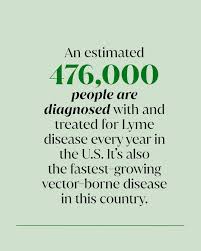Lyme Disease: Symptoms, Treatment, and Prevention in 2023

Introduction to Lyme Disease
Lyme disease is a tick-borne illness that has gained significant attention in recent years due to rising case numbers across various regions, especially in the UK and the US. With the changing climate and expanding tick habitats, understanding Lyme disease is crucial for public health. This infectious disease is caused by the bacterium Borrelia burgdorferi, transmitted primarily through the bite of infected ticks.
Current Statistics and Developments
According to the UK Health Security Agency, reported cases of Lyme disease have surged by over 15% in the past five years, highlighting the need for increased awareness and prevention efforts. In 2022 alone, there were approximately 2,000 confirmed cases in the UK, with a significant number occurring in rural and woodland areas where ticks are prevalent. Recent studies suggest that warmer weather patterns and increased outdoor activities have contributed to this rise.
Symptoms of Lyme Disease
Early symptoms of Lyme disease usually manifest within three to 30 days after a tick bite and may include:
- Fever and chills
- Fatigue
- Headaches
- Muscle and joint aches
- Swollen lymph nodes
A characteristic symptom is the erythema migrans rash, often resembling a “bull’s-eye” pattern. If not treated promptly, the disease can progress, leading to more severe symptoms such as joint pain, neurological problems, and even heart issues.
Prevention Strategies
Preventing Lyme disease is primarily about avoiding tick bites. People are advised to:
- Wear long sleeves and trousers when in wooded or grassy areas.
- Use tick repellents containing DEET on exposed skin.
- Perform regular tick checks after outdoor activities.
- Shower soon after returning indoors.
- Maintain gardens and lawns to reduce tick habitats.
Conclusion and Future Outlook
As Lyme disease continues to be a public health concern, ongoing education and research are essential for effective prevention and treatment strategies. Healthcare professionals advocate for increased awareness campaigns, especially during peak tick season from late spring to early autumn. For readers, understanding Lyme disease’s symptoms and prevention measures can lead to faster diagnoses and reduced incidences of severe health complications. With climate change impacting tick populations, it is vital to remain vigilant and informed about this disease in the coming years.


